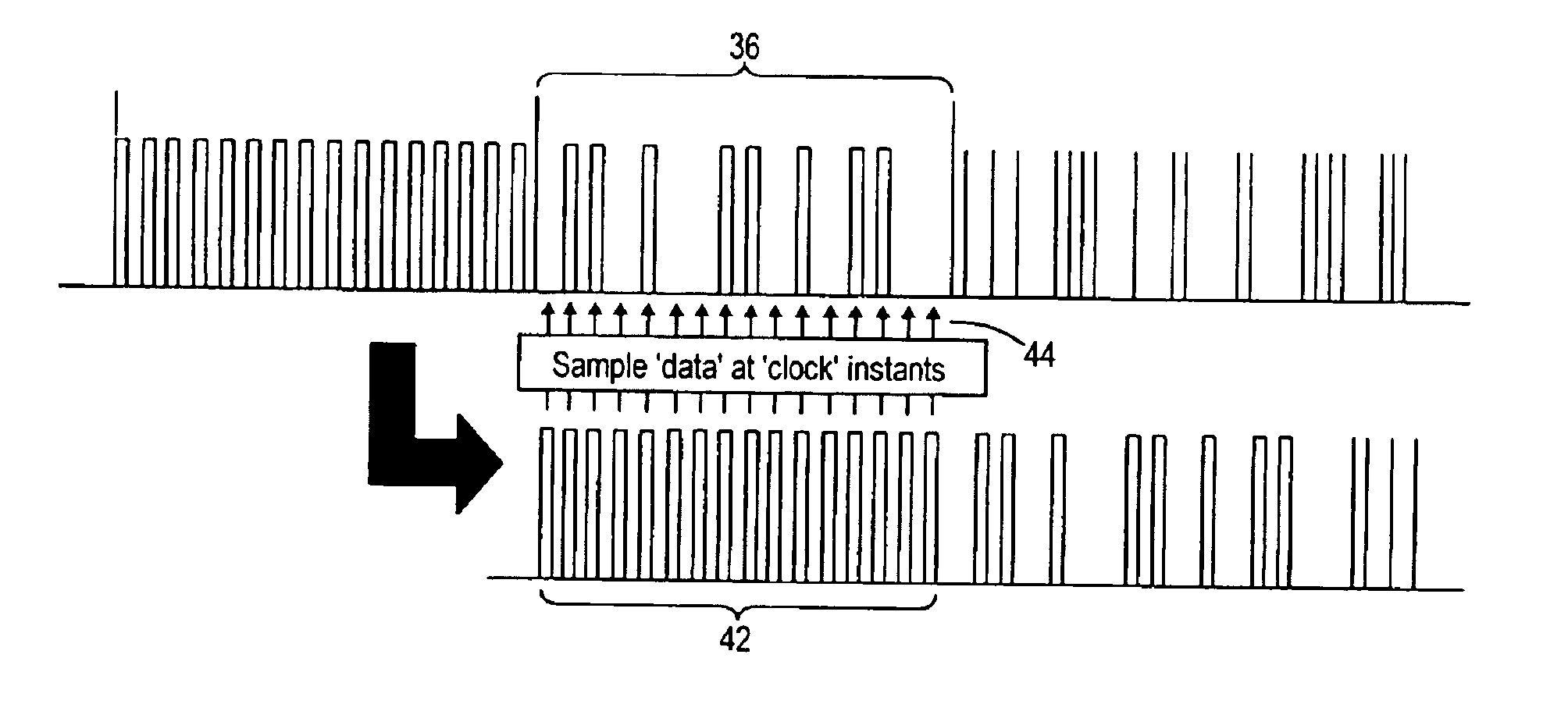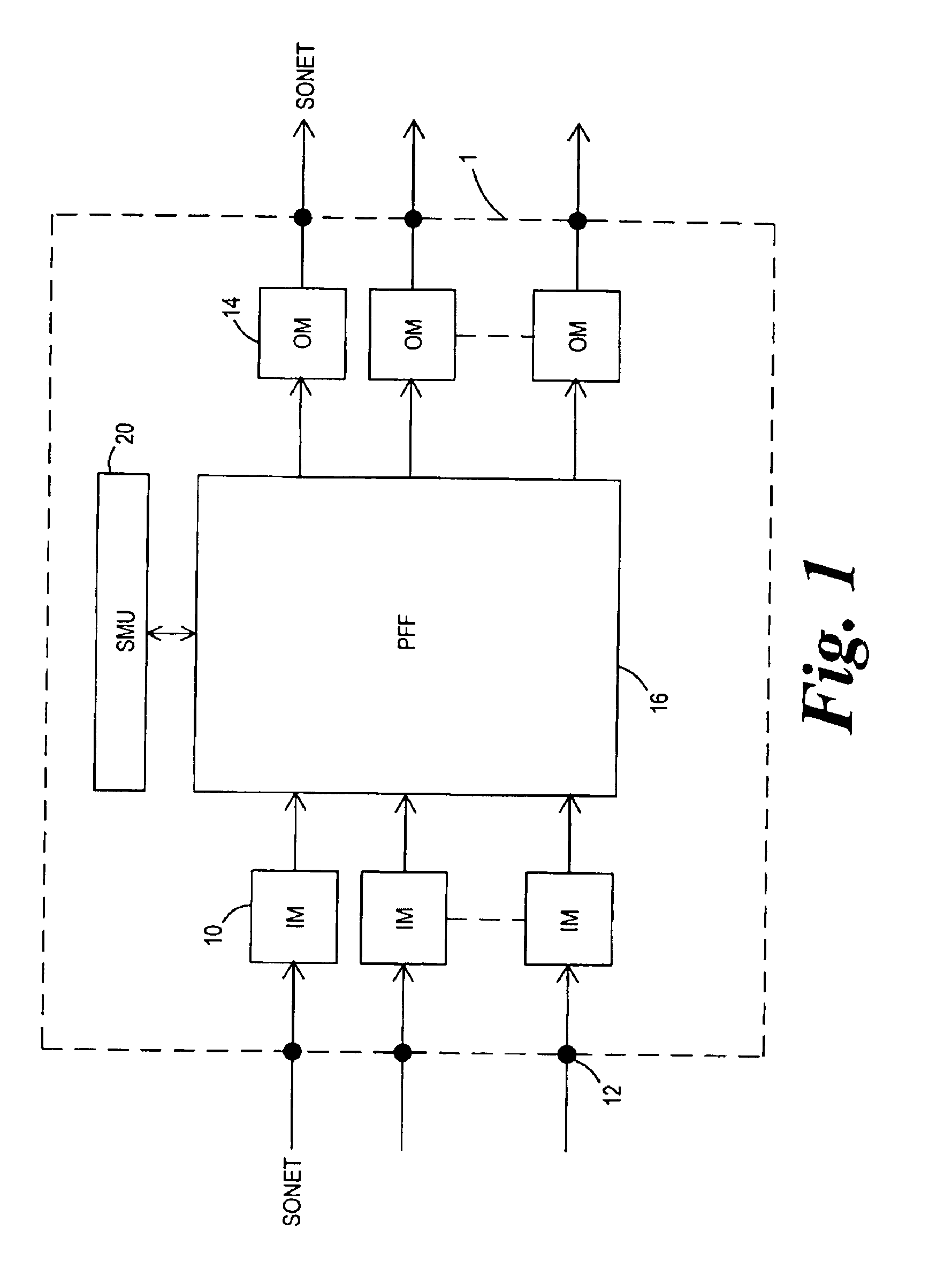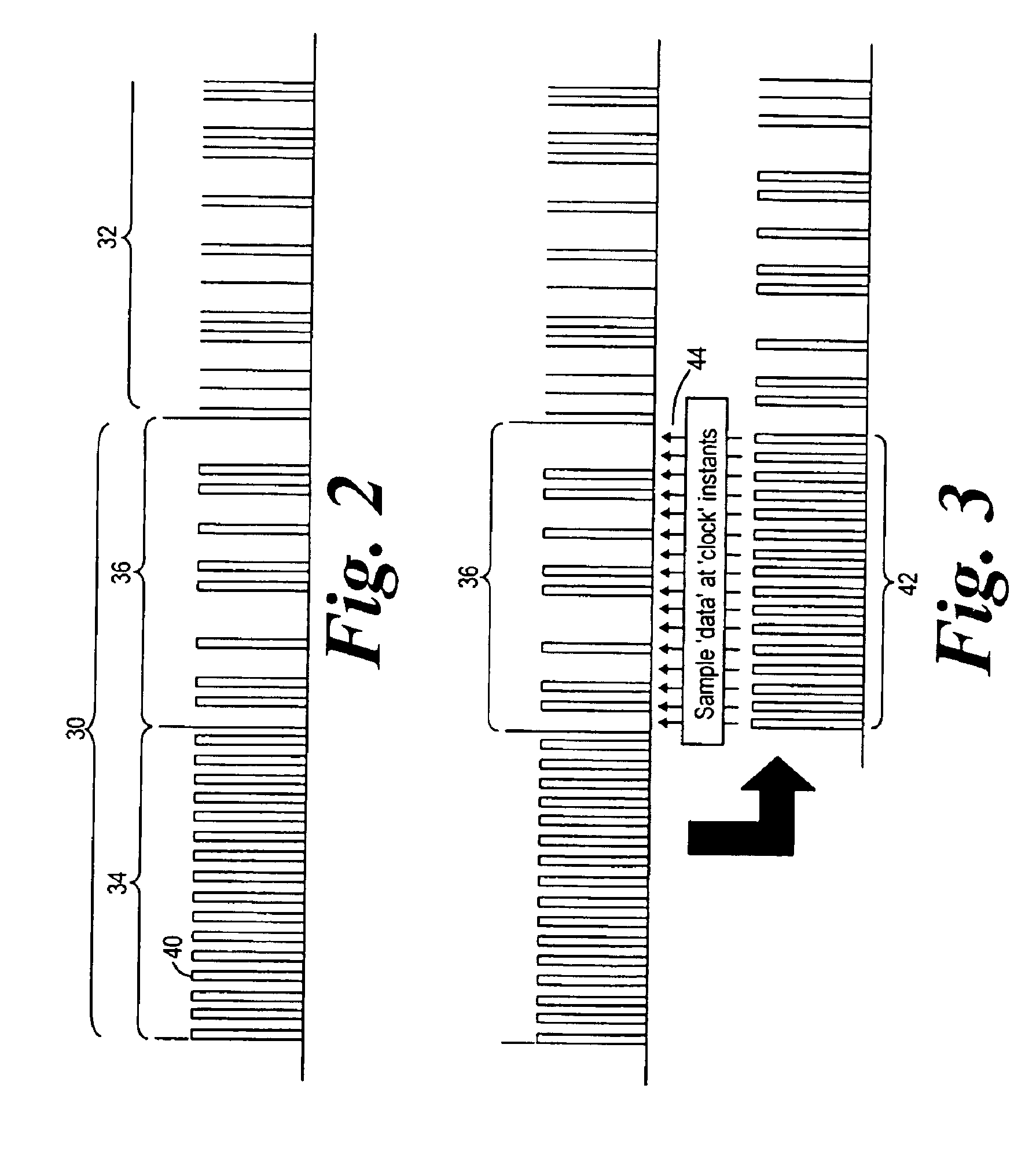Packet-based optical communications networks
a packet-based optical and communication network technology, applied in the field of optical communication networks, can solve the problems of limiting the data handling rate within optical networks, complex and expensive implementation, and so as to achieve the effect of reducing the overhead associated with overhead and increasing the data ra
- Summary
- Abstract
- Description
- Claims
- Application Information
AI Technical Summary
Benefits of technology
Problems solved by technology
Method used
Image
Examples
Embodiment Construction
[0047]This invention relates to the encoding of data to form an optical packet, and to apparatus for reading the header (or label) of the packet. The invention therefore relates to the physical layer of an optical packet network. This physical layer may be used to implement any desired packet switching mechanism and furthermore, as will be apparent from the following, it does not provide any constraints on the nature or encoding of the payload data within the optical packets. The packet reading and writing system may therefore be used to implement an optical packet based switching network, for example a label based switched network.
[0048]For the purposes of explanation, the operation of a conventional label switch operating in an optical network will be explained with reference to FIG. 1.
[0049]The fundamental operation of the switching system is to route packets according to information in the label of the packet. As will be known by those skilled in the art, the label contains all ...
PUM
 Login to View More
Login to View More Abstract
Description
Claims
Application Information
 Login to View More
Login to View More - R&D
- Intellectual Property
- Life Sciences
- Materials
- Tech Scout
- Unparalleled Data Quality
- Higher Quality Content
- 60% Fewer Hallucinations
Browse by: Latest US Patents, China's latest patents, Technical Efficacy Thesaurus, Application Domain, Technology Topic, Popular Technical Reports.
© 2025 PatSnap. All rights reserved.Legal|Privacy policy|Modern Slavery Act Transparency Statement|Sitemap|About US| Contact US: help@patsnap.com



